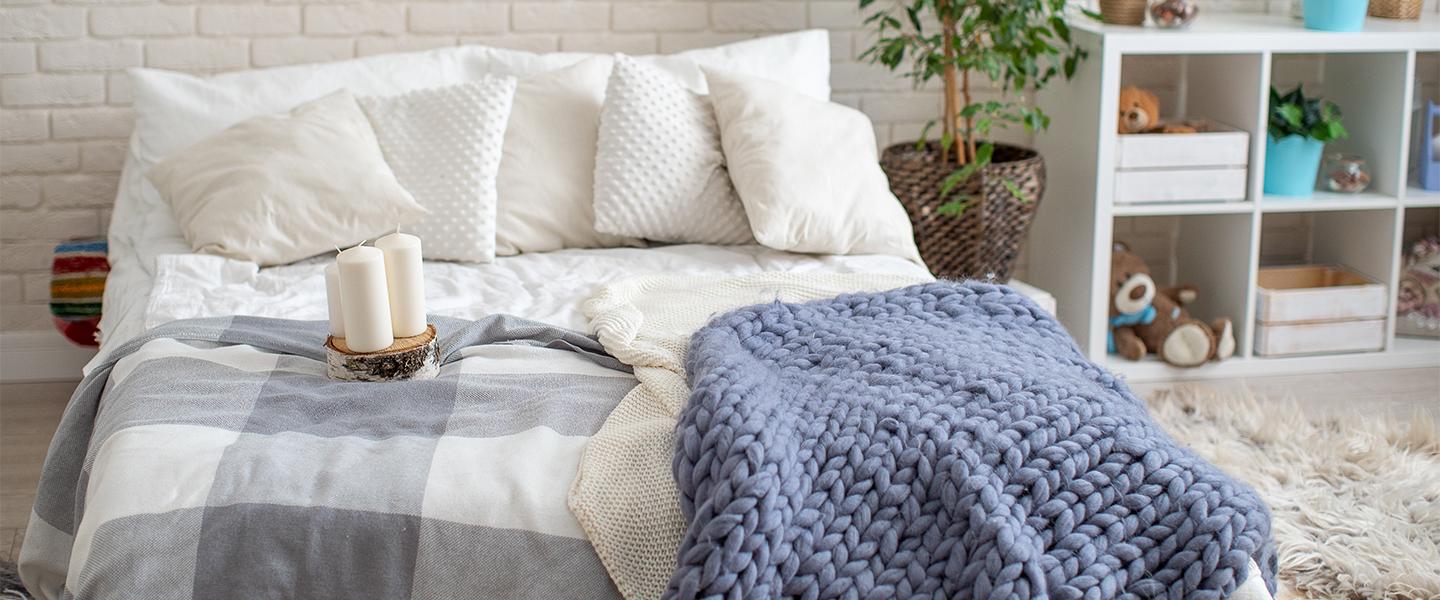How Many Pillows Should You Sleep With
The purpose of a pillow is to support your head and align your neck and spine while you lie down. With that in mind, it makes sense to say that you really only need one pillow to sleep. However, most of us have more than one pillow on our beds, and lots of people like to sleep with more than one pillow.
Medical conditions and other circumstances can influence how many pillows you want to sleep with, as well as personal preference. When deciding how many pillows you should sleep with, our guide will help you determine what’s best for you.
How Many Pillows Should Side Sleepers Use?
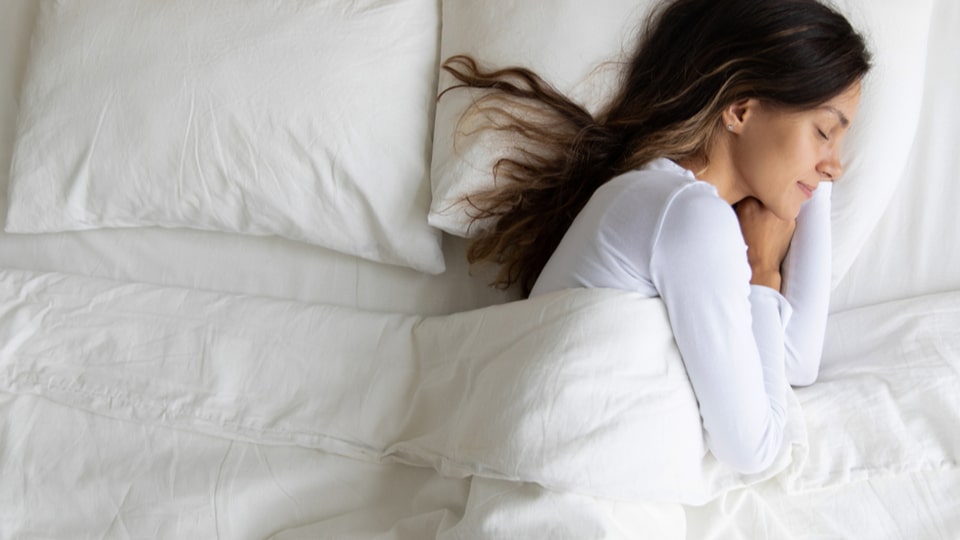
Side sleepers need two pillows to sleep with, but as long as you choose a good quality pillow, you need only one underneath your head. The other pillow is for your legs.
When you sleep on your side, your top leg can pull your spine out of alignment and cause pain in your lower back and hips. For that reason, side sleepers should sleep with a pillow between their knees to align their hips and pelvis with their spine. Choose a cheaper pillow to place between your knees if you prefer, or go with a smaller or firmer pillow.
Side sleepers may prefer firmer pillows to support their heads and necks.
Shop our pillows for side sleepers.
How Many Pillows Should Front Sleepers Use?

If you tend to sleep on your front, you will need only one thin pillow. Or, you might prefer not to sleep with a pillow at all.
If you’re a front sleeper, you don’t want a bulky pillow that will raise your head into what would be an awkward or unnatural position. Think about aligning your head and body to be as straight as possible. You may prefer a softer pillow or one that is three inches thick or less to avoid straining your neck or pushing your head back. It's absolutely fine to sleep without a pillow, and many front sleepers are more comfortable that way. Or, you can buy pillows for front sleepers for a great night's sleep.
Shop our pillows for front sleepers.
How Many Pillows Should Back Sleepers Use?

If you sleep on your back, a medium pillow that is three to five inches thick is ideal. This level of firmness and height will support the natural curvature of your neck as you lie down without forcing your head forward and onto your chest.
If you do sleep on your back, you may be more predisposed to snoring. Back sleepers can also suffer from sleep apnea, which causes pauses in breathing, gasping, or choking. If you sleep on your back and are not getting enough sleep, you might want to try changing your sleep position or training yourself to sleep on your side. You can do this by sewing a pocket over the spine of a T-shirt and putting a tennis ball into the pocket. Then, when you roll onto your back, you will naturally turn over onto your side without waking.
Anti-snore pillows are specially designed to help relieve the symptoms. An S-shaped inner foam core supports the head and neck to help encourage better breathing. For more information, read our guide on how anti-snore pillows work.
Shop our pillows for back sleepers.
How Many Pillows Should Neck Pain Sufferers Use?
Neck pain can be caused by an injury, worn joints, a pinched nerve, bad posture, or sleeping in an awkward position. Neck pain sufferers need only one pillow, and the pillow should align your head to be the same height as the rest of your body when you sleep.
If you suffer from neck pain:
- Try using a small pillow under your neck.
- Consider the shape of your pillow. You can purchase curved, cervical, or orthopaedic pillows that contour with the shape of your body when you’re lying down. These pillows are shaped to fill the space between your neck and the mattress, so your head is perfectly supported.
- Try sleeping on your back with your thighs elevated on pillows, which will flatten your spinal muscles.
If your neck pain is caused by your pillow, it means you have the wrong pillow for you and it’s making you sleep in an awkward position. A supportive neck pillow can help curb your neck pain and improve your quality of sleep.
How Many Pillows Should Back Pain Sufferers Use?
If you suffer from back pain, your sleeping position, your mattress, or even your pillow could be causing or contributing to the problem. There are things you can do to help yourself enjoy a better night’s sleep, starting with sourcing a good quality pillow.
Certain sleeping positions can cause spinal misalignment and put pressure on your shoulders, hips, and knees. A knee pillow can help to alleviate discomfort associated with sciatica, back and joint pain, post-injury, and pregnancy.
If you sleep on your side, try putting a pillow between your knees, calves, or under a single leg. You can also get bolster pillows for lumbar support and adjustable ergonomic-shaped pillows.
If you suffer from lower back or disc pain, try sleeping in the foetal position with your knees tucked into your chest and use a medium to high pillow for your head.
Other Factors That Influence How Many Pillows You Should Sleep With
How soft your pillows are: If you prefer soft pillows, you may need more than one to get the correct alignment through your spine and neck.
Your size: People with small to average-sized heads may prefer medium-height pillows to feel the most comfortable. Individuals with larger heads may find that they sink too deeply into average pillows and therefore prefer a thicker pillow.
Your weight: Lighter individuals are less prone to sink into the mattress and tend to prefer medium-thick pillows that will help to promote optimal spinal alignment. Those with heavier weight considerations are more likely to experience sinkage and may find a thinner pillow helps keep the head even with the spine.
Support when relaxing: If you like to read or watch television in bed, you might wish? to have extra pillows on your bed to support your neck, shoulders, and back when you’re sitting up or reclining.
Decorative purposes: You might like lots of pillows on your bed for aesthetic reasons. When you think of a luxurious bed in a hotel room, chances are you will picture lots of lovely big luxury pillows. Many hotel chains arrange rows of pillows at the head of the bed and against the headboard to make the bed look inviting. If you want your bed to look lavish and opulent, you can choose coloured pillowcases to complement duvet covers, bed runners, blankets, and throws. Learn how to arrange your pillows and discover what size a standard pillow is to perfect your finished look.
To help clear your nose and chest: You might prefer extra pillows to prop yourself up if you tend to suffer from colds, allergies, or a blocked-up nose.
Things to Consider When Choosing How Many Pillows to Sleep With
Ultimately, when deciding how many pillows you should sleep with, you should aim to find a pillow that supports your head and neck so that your sleeping posture is straight and your spine is aligned.
Make sure you have considered the age of the pillow, how often you change your pillow can play a part into the quality of your sleep. Also, consider whether you want a pillow to minimise snoring, allergies, or that you can wash in the washing machine.
Here at Sleepseeker, we stock a range of pillows, including pillows for side sleepers, front sleepers, and back sleepers. Dedicated to helping you get the best night’s sleep, we even stock scented pillows and V-shaped pillows for nursing mothers or older people, as well as duvets, mattress toppers and more.
Read more of our guides:
What's trending now...
-

Slumberdown Super Support Firm Support Side Sleeper Pillow, 2 Pack
£17.00
Shop Now -

Slumberdown All Seasons Combi 15 Tog (10.5 + 4.5 Tog) Double Duvet
£30.50
Shop Now -
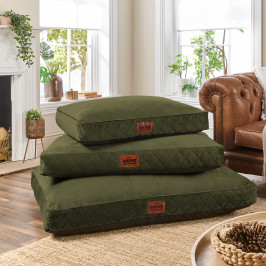
Slumberdown Paws for Slumber Olive Green Pet bed, Medium
£39.00
Shop Now -

Slumberdown Wonderful Wool Mattress Topper, King
£60.00
Shop Now -

Slumberdown Paws for Slumber Extra Large Pet Bed Spare Cover, Grey
£20.00
Shop Now -
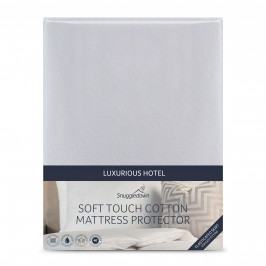
Snuggledown Luxurious Hotel Cotton Waterproof Mattress Protector, Double
£23.50
Shop Now -

Slumberdown Wonderfully Warm Electric Blanket - Single
£60.00
Shop Now -

Slumberdown Teflon Pillow Protector - Pack of 2
£14.00
Shop Now -

Slumberdown Unwind Outside 2-in-1 Waterproof Cocoon Set, Burnt Orange
£30.00
Shop Now -
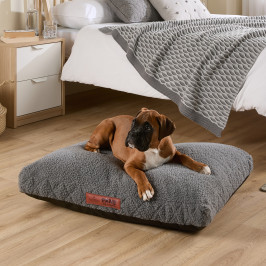
Slumberdown Paws For Slumber Sherpa Pet Bed, Medium
From: £25.00
Shop Now -

Slumberdown Super Support Firm Support Side Sleeper Pillow
From: £17.00
Shop Now -

Slumberdown All Seasons Combi Duvet
From: £25.50
Shop Now -

Slumberdown Paws for Slumber Medium Pet Bed
From: £39.00
Shop Now -

Slumberdown Wonderful Wool Mattress Topper
From: £54.50
Shop Now -

Slumberdown Paws for Slumber Extra Large Pet Bed Spare Cover
From: £20.00
Shop Now -
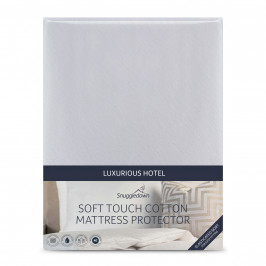
Snuggledown Luxurious Hotel Cotton Waterproof Mattress Protector
From: £19.50
Shop Now -

Slumberdown Wonderfully Warm Electric Blanket
From: £60.00
Shop Now -

Slumberdown Unwind Outside 2-in-1 Waterproof Cocoon Set
From: £30.00
Shop Now -
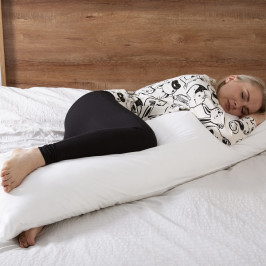
Slumberdown Body Support Pillow, 1 Pack, Includes 100% Cotton Pillow Case
£20.00
Shop Now -

Slumberdown All Seasons Combi 15 Tog (10.5 + 4.5 Tog) King Size Duvet
£34.00
Shop Now -
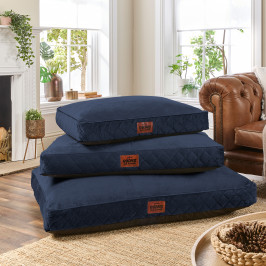
Slumberdown Paws for Slumber Navy Pet Bed, Large
£49.00
Shop Now


